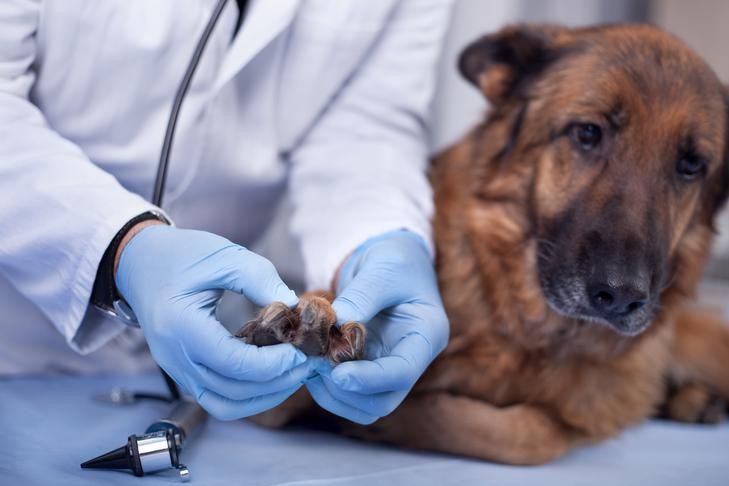Excessive paw licking in dogs can be a frustrating and concerning issue for pet owners. While occasional licking is normal for grooming, persistent licking often signals an underlying problem. Understanding the potential causes is crucial for addressing this behavior and ensuring your dog’s well-being. This article will explore the common reasons why dogs excessively lick their paws, ranging from injuries and allergies to behavioral issues.
Common Causes of Excessive Paw Licking
Several factors can contribute to a dog’s persistent paw licking. Here are some of the most prevalent causes:
Injuries
One of the most straightforward reasons for paw licking is injury. Thorns, glass shards, or small stones lodged between the paw pads can cause discomfort and lead to licking. Similarly, cuts, burns, or torn nails can also trigger this behavior.
Carefully examine your dog’s paws for any visible signs of injury. Look for redness, swelling, bleeding, or foreign objects. If you find an injury, consult your veterinarian for appropriate treatment.
Dermatitis and Allergies
Allergies are a frequent culprit behind excessive paw licking. Dogs can be allergic to various substances, including pollen, grass, mold, dust mites, and certain food ingredients. These allergens can cause inflammation and itching, prompting your dog to lick their paws for relief. Contact dermatitis, caused by irritants like cleaning products or lawn chemicals, can also lead to paw licking.
Your veterinarian can perform allergy testing to identify the specific allergens affecting your dog. Treatment options may include antihistamines, medicated shampoos, and dietary changes. Regularly cleaning your dog’s paws after walks can also help remove potential allergens.
Parasites
Fleas, ticks, and mites can infest a dog’s paws, causing intense itching and irritation. Even a single flea bite can trigger significant discomfort and lead to excessive licking. Mange, a skin disease caused by mites, can also result in persistent paw licking.
Regularly using flea and tick preventatives is essential to protect your dog from these parasites. If you suspect your dog has mange, consult your veterinarian for diagnosis and treatment.
Food Sensitivities
While less common than environmental allergies, food sensitivities can also manifest as itchy paws. Certain ingredients in dog food, such as beef, chicken, wheat, or dairy, can trigger an allergic reaction.
If you suspect a food allergy, your veterinarian may recommend an elimination diet to pinpoint the offending ingredient. This involves feeding your dog a novel protein diet for several weeks to see if the paw licking subsides.
Pain
Paw licking can be a sign of pain in the paws, legs, or even other parts of the body. Conditions like arthritis, hip dysplasia, and nerve damage can cause discomfort that leads to licking. Dogs may lick their paws as a way to soothe the affected area.
If your dog exhibits other signs of pain, such as limping, stiffness, or reluctance to move, consult your veterinarian for a thorough examination.
Behavioral Issues
In some cases, excessive paw licking can stem from behavioral issues like anxiety, boredom, or obsessive-compulsive disorder (OCD). Dogs may lick their paws as a coping mechanism for stress or as a way to self-soothe. Boredom can also lead to repetitive behaviors like paw licking.
Providing your dog with plenty of exercise, mental stimulation, and interactive playtime can help alleviate boredom and anxiety. In cases of OCD, your veterinarian may recommend behavior modification techniques or medication.
Secondary Infections
Chronic paw licking can create a moist environment that promotes the growth of bacteria and yeast. This can lead to secondary infections, further exacerbating the itching and licking cycle. It’s crucial to address the underlying cause of paw licking to prevent secondary infections.
When to See a Veterinarian
If your dog’s paw licking is persistent, intense, or accompanied by other symptoms like redness, swelling, bleeding, or odor, it’s essential to consult your veterinarian. They can diagnose the underlying cause and recommend appropriate treatment to alleviate your dog’s discomfort and prevent further complications. Early intervention is key to resolving this issue and ensuring your dog’s well-being.

